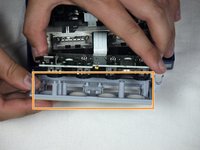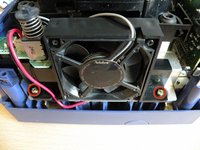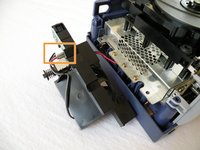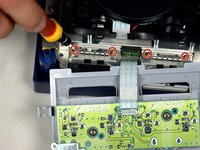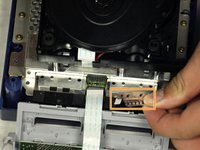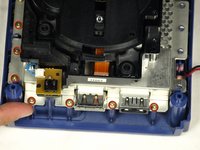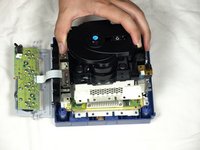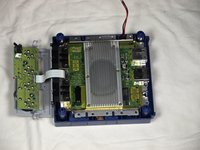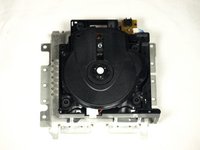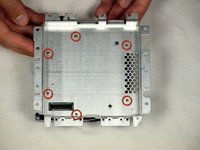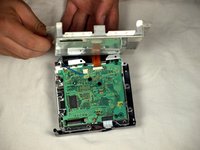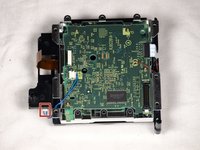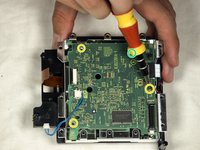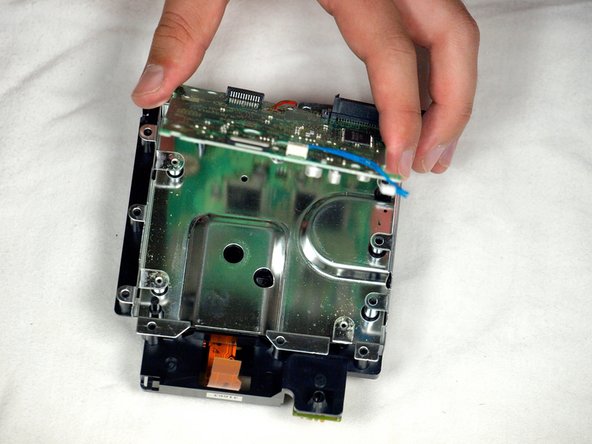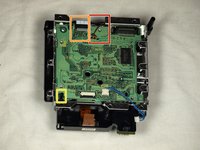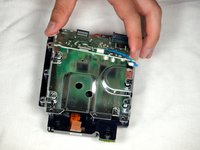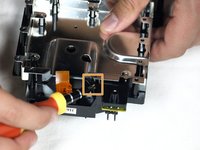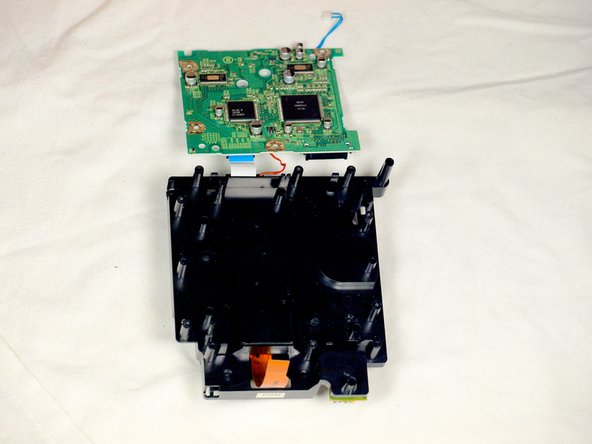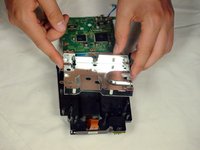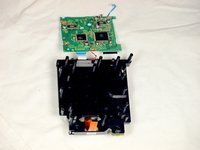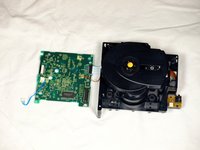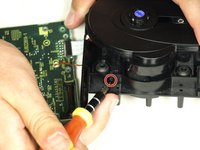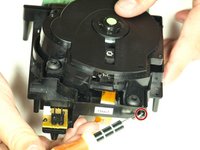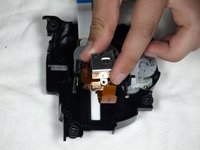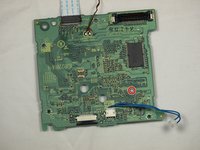crwdns2915892:0crwdne2915892:0
This fixes the problem of game discs not being read properly.
IMPORTANT: Steps 11-16 serve no purpose here, and will only lengthen this process. To save yourself time and effort, skip directly from step 10 to step 17
crwdns2942213:0crwdne2942213:0
-
-
Turn over the Gamecube so that the bottom side is facing up.
-
Use the 4.5 mm Gamebit screwdriver to remove all four screws.
-
-
-
With the bottom side of the GameCube facing upward and the screws removed, carefully pull the outer shell of the unit away from the top half.
-
Move the GameCube so that the inside is facing upwards.
-
-
-
Gently press down on the clips located on either side of the back panel.
-
Carefully remove the back panel from the GameCube.
-
-
-
Unclip the controller ports at the front of the unit.
-
-
-
Use a Phillips #2 screwdriver to remove the two screws on the back of the control port.
-
Carefully separate the gray outer casing of the control port and the circuit board.
-
-
-
The left side of the unit contains the cooling fan and its housing.
-
Carefully remove the two screws attaching the cooling fan housing to the unit.
-
-
-
-
Remove the four Phillips #1 screws retaining the ground springs.
-
Carefully remove the ground springs from the main unit.
-
-
-
The optical drive is secured to a metal plate.
-
Using a Phillips #2 screwdriver, unscrew the twelve screws that are around the outer edge of the optical drive.
-
-
-
Carefully separate the optical drive assembly from the rest of the GameCube unit.
-
The optical drive assembly is secured to the motherboard underneath by a slot; some force may be required to carefully free the assembly.
-
The metal plate and the actual optical drive will remain attached.
-
-
-
At this point, your optical drive assembly should be separated from your GameCube.
-
Flip the optical drive assembly upside down.
-
Remove the six screws with a Phillips #1 screwdriver.
-
Gently lift and remove the metal plate.
-
-
-
Remove the blue wire by gently pulling.
-
Disconnect the brown cable. This is done by gently pulling the black tab away from the white plastic. This will loosen the tension on the brown cable, allowing it to slide away from the tab gently.
-
Remove the four Phillips #1 screws connecting the circuit board to the optical drive assembly.
-
The fourth screw is located behind the screwdriver in the third picture.
-
-
-
Release the small clip holding the board down.
-
Gently remove the circuit board (the large green square) as shown in the three pictures.
-
Red Wire
-
White ribbon Cable
-
-
-
Use a flathead screwdriver to carefully release the four plastic clips holding the drive assembly together.
-
Carefully use a screwdriver as leverage to unscrew and release the last clip.
-
-
-
Gently lift the metal plate off the drive assembly.
-
Then, flip the two halves of the drive assembly upside down.
-
-
-
Use a flathead screwdriver to release the two clips located on the back half of the drive assembly.
-
The final clip doesn't need to be released; the top half of the drive assembly will slide away from the lower half.
-
Finish removing the top half of the drive assembly from the base.
-
-
-
Once the top half of the drive assembly is detached, turn it upside down.
-
Using a Phillips #1 screwdriver, carefully remove the three final screws near the lens assembly bars.
-
Extract the final three screws and remove the lens assembly.
-
-
-
Rotate the assembly so that the green circuit board is facing you as shown in the first picture.
-
Flip board over so it is oriented as shown in the second picture.
-
Using a Phillips #1 Screwdriver, turn the small knob very slightly counter-clockwise—a few degrees to, at most, one-quarter turn.
-
To reassemble your device, follow these instructions in reverse order.
crwdns2935221:0crwdne2935221:0
crwdns2935229:029crwdne2935229:0
crwdns2947412:06crwdne2947412:0
I don't understand why you have steps 11-17. In step 10, you can clearly see the board with the screw that needs adjusting. Taking apart the rest of the GameCube is utterly unnecessary. After following the guide in full, I thought, 'Why did I just dismantle all that other stuff when I didn't even NEED to?'
Once the assembly is removed from the metal covering the board, it is a simple matter to turn the screw to increase the laser strength. I did this after my initial adjustment didn't work. I ignored steps 11-17 and everything works perfectly now. My old games which simply would not load, now do. Thanks for the advice leading up to step 10 though. That part was helpful.
I wouldn't say it's a quarter of a turn, a few degrees clockwise do the trick. I tried a quarter of a turn the first time and it made the disk unit useless as it didn't recognise any gamecube disk.
Thanks for the detailed pictures! I was able to get everything taken apart, and fixed the read error I was having after a couple of readjustments.
One important note: the lens screw should be turned counter-clockwise, not clockwise. A quarter turn is also likely to be too much; better to adjust a few degrees at a time and test repeatedly until the right setting is found.
gameFAQs.com has a lens calibration guide, with notes on how to reassemble the GameCube for testing without screwing everything back together.
I also agree that steps 11-17 can be skipped, as well as step 5 to remove the controller ports.
Steps 11+ are definitely not needed and 1/4 turn is more than 200ohms, way too much. It has to be moved by a hair (almost literally), the potentiometer is extremely sensitive. And I would personally recommend some form of multimeter, as to not go turning that screw blindly.
Great guide, this fixed my problem. Would like to be clarified if you need to follow steps 11-17 make the power adjustment.

















